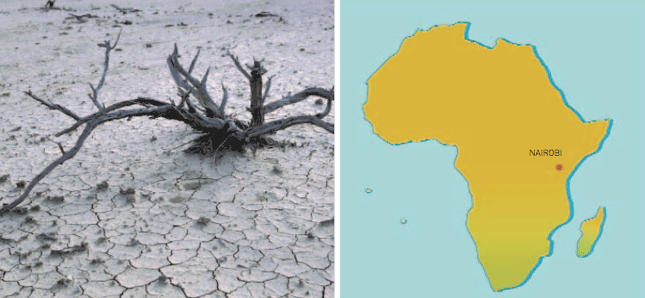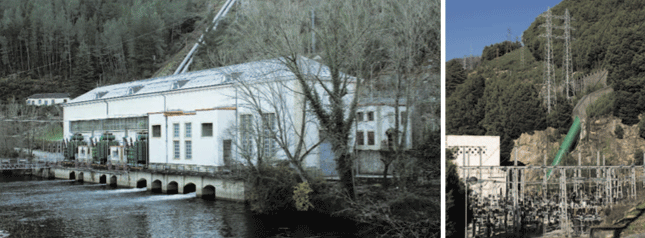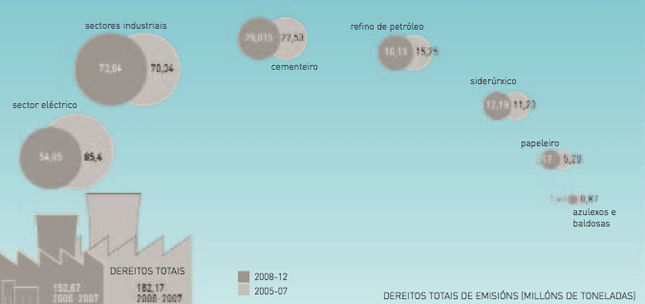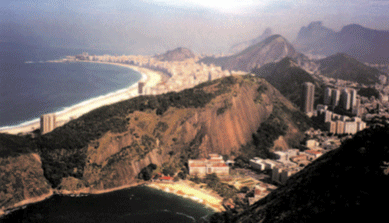Nowadays growing carbon dioxide emissions are a result of a considerable increase in energy demands and therefore its availability, because the world population is growing significantly -about 1 billion inhabitants in 12 years-. The poorest countries -Africa, Asia and, to a lesser extent, South America- are the regions where the population’s growing rate is higher.

In the World Climate Summit, that took place in Nairobi, Kenya and ended on the 17th November 2006, the UN General-Secretary emphasized that a programme to predict the consequences of climate change mainly in Africa is urgently needed “because climate change will have devastating impacts on the poorest countries”, and advised: “we are arriving at a non-return situation”.


This Summit allowed them to advance in the adaptation to climate change by means of an Adaptation Fund agreed some years ago, which is aimed at making easier for developing countries to adapt themselves to the present and future impacts of climate change.
In addition, the Summit welcomed Brazil’s successful proposal to envisage positive incentives in order to reduce deforestation in developing countries. Up to the present only forestation activities were rewarded. This is very relevant since deforestation not only releases a large quantity of CO2 but it also has negative effects on the economies and biodiversity of those areas.
Industrialised countries produce half of the carbon dioxide emissions, and the developing countries and the former Soviet Union produce the rest. All countries tend to increase instead of cutting their emissions. The search for a fair equality between countries implies a trend to increase emissions in developing countries.
Kyoto’s water palace. This city is an example of harmony between man and nature.

In 1997, in the Japanese city of Kyoto the developed countries committed themselves to cutting their greenhouse gas emissions, although the poorest countries got out of this commitment. The global targets aimed by all the countries account for 5.2 % from 1990 levels, although for each country there is a particular emission target according to their past emissions.
For the first time in Nairobi countries dealt with poorer countries, trying to make them take part in the Kyoto Protocol without compromising their economic development, even though developing countries such as China and India did not join the Industrial Revolution. The poorest countries account for 80 % of the world population, and that is the reason why their need for industrial development makes the present carbon dioxide emission targets more difficult for the next 50 years. In addition, poorer countries’ emissions could not even be doubled, assuming that industrialised countries manage to reduce significantly their emissions. This proposal is in line with the report delivered by the British Prime Minister, Tony Blair, who suggested that reducing emissions by 60% would lead the USA’ emissions, that account for almost five times the world’s average emissions, to be reduced to almost a half by 2056.
EMISSION RIGHT
The right a company has to release a CO2 ton for a certain period.
EMISSION ALLOWANCE
They are awarded by Governments when it is certified that a company can demonstrate a measurable and long-term ability to reduce emissions.
The commitment to limit carbon dioxide emissions implies the challenge of changing the way to obtain energy which involves new investments. The company that emits the highest quantity of carbon dioxide in Spain has its headquarters in Galicia: the power station located at the town of As Pontes, province of A Coruña. This company is making changes to adapt to the targets aimed. In order to meet Kyoto’s commitments, companies that exceed the emission limits awarded by governments, must buy emission rights for the excess emissions.
In power stations, the tallest and thinnest chimneys are those that release carbon dioxide. The lowest and thickest structures are the cooling towers that only release water vapour.

Following the IPCC report delivered on the 2nd February 2007, the present greenhouse gases concentration is the highest for the last 650 000 years, 35% higher than in the Pre-industrial age.
Both the 1997 Kyoto Protocol’s and the 2006 Nairobi Summit’s proposals established measures to reduce the use of fossil fuels to obtain energy. This will have an immediate impact on water power in order to meet the growing energy demands.
In Spain, the electricity sector will have to pay for the 16% cut in greenhouse gas emission rights agreed by the Government on the 24th November 2006. The Spanish Government’s aim is that by 2008-2012 global greenhouse gas emissions do not exceed 37% those in 1990.
This situation of temperature rise and rainfall reduction makes more and more difficult for water energy to play the key role assigned.

As a consequence of such scenario, alternative energies must be developed and promoted in the near future in order to tackle with this problem. In this new climatic context, solar energy –in its different forms- will clearly profit from the sunshine hours increase. In addition, climate change could imply strong wind events relevant to develop wind power. Nevertheless, if these new energy sources are not enough to meet the demands, either nuclear energy or new energy forms such as hydrogen or fusion could be promoted.

Climate change will have considerable impacts on tourism. In the strongest tourist destinations these effects will be more remarkable, but governments are not paying enough attention to this. Spain is a good example since although it is a destination chosen by millions of foreigners, enormous hotels are still being built on the seaside and new winter resorts are being opened constantly.

Sea level rise will make many beaches disappear and the snow loss will affect sky and winter resorts. In addition, forest fires also threaten nature and rural tourism and will damage the sea bottoms. This will make tourists change their destinations. Thus, tourists coming to Spain from the North could look for other holiday destinations in the North.
On the other hand, in the last decades the insurance sector is making their products more expensive on the grounds of climate change’s effects. The reason for this is that compensations for climate risks are growing because floods, storms, frosts, droughts and so on are occurring more frequently.
Finally, as a result of the growing population’s tendency to settle on big cities, particularly in undeveloped areas such as Mexico and Rio de Janeiro, and of increasing longer and more intense heat waves, more climate-related diseases will appear.
In addition, pathogen organisms have expanded geographically in less warm and dry climates, therefore spreading infections such as the malaria mosquito, to new geographical areas.

A British well-known economist, Nicholas Stern, has published a report in 2006, where he comes to the conclusion that climate change’s cost can exceed the Second World War’s, and in 50 years lead the planet to an economic crisis similar to that occurred in 1929 with the Big Depression. The report advises particularly that climate change can cost the world economy up to 20% of the Gross National Product (GNP) if the global temperature rises by 5 degrees Celsius and governments do not react immediately. If the rise was by 2-3 degrees, the annual deficit will account for 5%.
This report also emphasizes other issues: First of all, the fact that the main victims of global warming will be the poorer countries; in addition there could be 200 million climate refugees, either because the new conditions will ruin their way of life which is mainly agriculture, or due to the ground filling caused by the sea level rise; finally extreme climate events such as droughts, sea storms, floods and heat waves will occur more frequently.
 Sir Nicholas Stern (born in 1946) is a British scholar and economist. He was the World Bank’s Vice-President from 2000 to 2003. Nowadays he works as an economic advisor for the British Government and he is the author of the so-called Stern Report on Climate Change and Global Warming Impacts on Economy. This report, published on October 2006 is the first one to be commissioned by a Government to an economist, instead of a climatologist.
Sir Nicholas Stern (born in 1946) is a British scholar and economist. He was the World Bank’s Vice-President from 2000 to 2003. Nowadays he works as an economic advisor for the British Government and he is the author of the so-called Stern Report on Climate Change and Global Warming Impacts on Economy. This report, published on October 2006 is the first one to be commissioned by a Government to an economist, instead of a climatologist.
Finally, it was suggested that Northern countries could have a more positive period due to more benign temperatures, which will lead to more productive crops and an increase in tourism.












 Sir Nicholas Stern (born in 1946) is a British scholar and economist. He was the World Bank’s Vice-President from 2000 to 2003. Nowadays he works as an economic advisor for the British Government and he is the author of the so-called Stern Report on Climate Change and Global Warming Impacts on Economy. This report, published on October 2006 is the first one to be commissioned by a Government to an economist, instead of a climatologist.
Sir Nicholas Stern (born in 1946) is a British scholar and economist. He was the World Bank’s Vice-President from 2000 to 2003. Nowadays he works as an economic advisor for the British Government and he is the author of the so-called Stern Report on Climate Change and Global Warming Impacts on Economy. This report, published on October 2006 is the first one to be commissioned by a Government to an economist, instead of a climatologist.